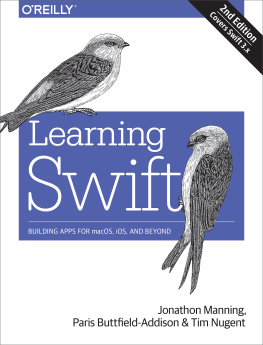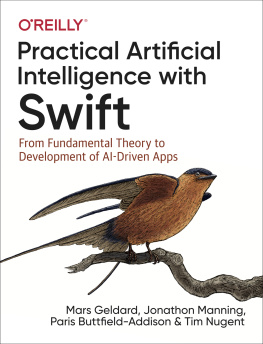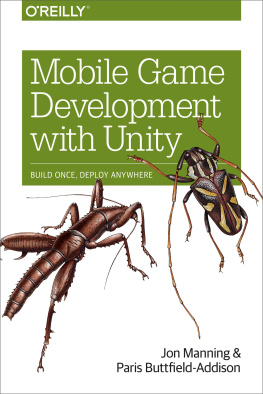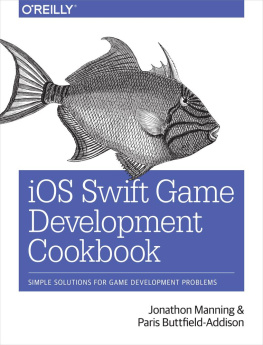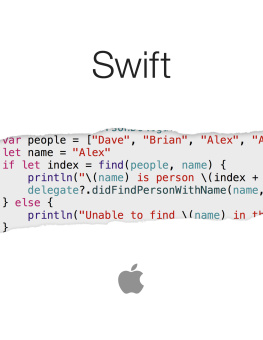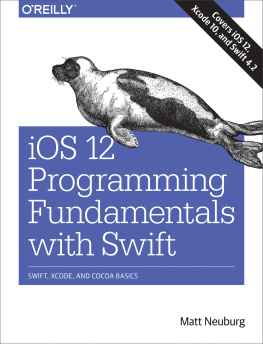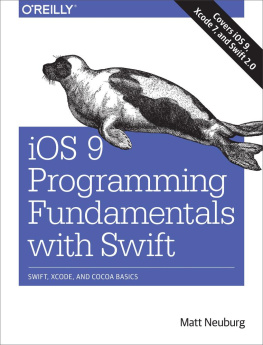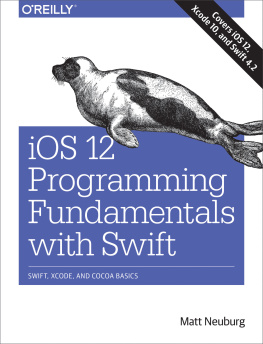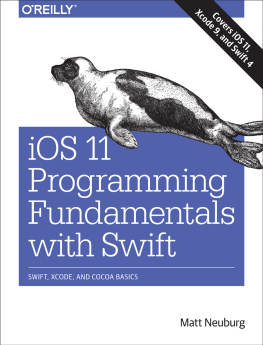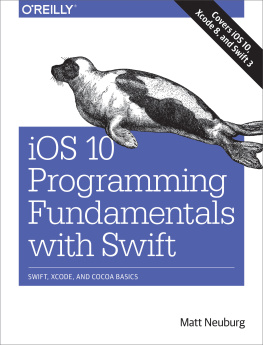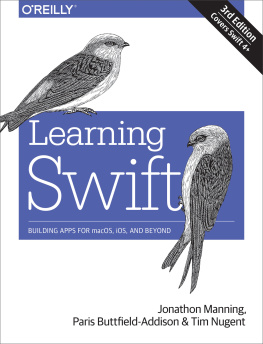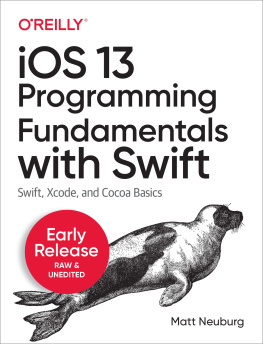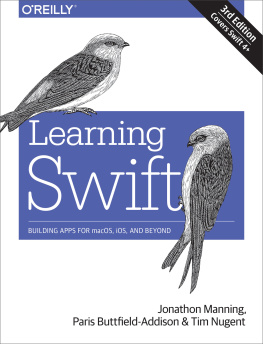Buttfield-Addison Paris - Learning Swift: building apps for macOS, iOS, and beyond
Here you can read online Buttfield-Addison Paris - Learning Swift: building apps for macOS, iOS, and beyond full text of the book (entire story) in english for free. Download pdf and epub, get meaning, cover and reviews about this ebook. City: Sebastopol;CA, year: 2017, publisher: OReilly Media, genre: Home and family. Description of the work, (preface) as well as reviews are available. Best literature library LitArk.com created for fans of good reading and offers a wide selection of genres:
Romance novel
Science fiction
Adventure
Detective
Science
History
Home and family
Prose
Art
Politics
Computer
Non-fiction
Religion
Business
Children
Humor
Choose a favorite category and find really read worthwhile books. Enjoy immersion in the world of imagination, feel the emotions of the characters or learn something new for yourself, make an fascinating discovery.
- Book:Learning Swift: building apps for macOS, iOS, and beyond
- Author:
- Publisher:OReilly Media
- Genre:
- Year:2017
- City:Sebastopol;CA
- Rating:3 / 5
- Favourites:Add to favourites
- Your mark:
Learning Swift: building apps for macOS, iOS, and beyond: summary, description and annotation
We offer to read an annotation, description, summary or preface (depends on what the author of the book "Learning Swift: building apps for macOS, iOS, and beyond" wrote himself). If you haven't found the necessary information about the book — write in the comments, we will try to find it.
Get valuable hands-on experience with Swift 3, the latest version of Apples programming language. With this practical guide, skilled programmers with little or no knowledge of Apple development will learn how to code with Swift 3 by developing three complete, tightly linked versions of the Notes application for the OS X, iOS, and watchOS platforms.
In the process, youll learn Swifts fundamentals, including its syntax and features, along with the basics of the Cocoa, CocoaTouch, and WatchKit frameworks. This book teaches you how to use common design patterns for Swift, how to structure an application for Apples platforms, and how to submit working apps to the App Store.
Divided into four distinct parts, this book includes:
Buttfield-Addison Paris: author's other books
Who wrote Learning Swift: building apps for macOS, iOS, and beyond? Find out the surname, the name of the author of the book and a list of all author's works by series.

